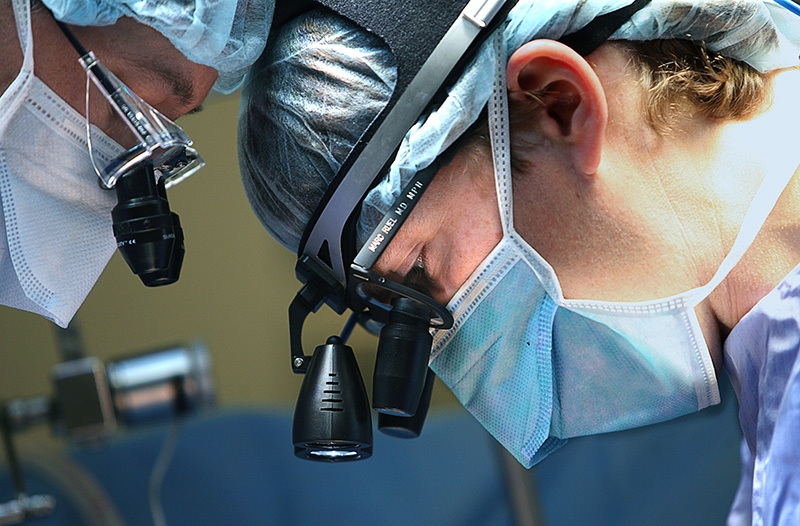Purpose

Thoracoscopic surgical ablation is a minimally invasive procedure used to treat atrial fibrillation (AF), a common type of arrhythmia. This approach is used when the condition does not respond to drug therapy.
Thoracoscopic surgical ablation consists of three steps.
- Radio-frequency (energy) waves destroy the heart cells which are disrupting the electrical pathway. This helps restore the heart’s normal signalling abilities.
- Some nerves around the heart are also destroyed as part of the treatment.
- A piece of muscle called the left atrial appendage is removed.
Together, these steps help to stop the abnormal electrical signalling and reduce the risk for blood clot formation.
Description
- Before the procedure, a series of tests need to be done in hospital. These include blood tests, an electrocardiogram, an angiogram, an echocardiogram, and in some cases a CT scan.
- A nurse or doctor will ask you to complete a consent form. This is required before the procedure can be performed.
- You will be taken to the Cardiac Operating Room.
- The procedure is carried out under general anesthesia and you will be unconscious throughout the operation.
- Small cuts (4 to 5 cm long) are made on each side of the chest. The breastbone is not cut. A thoracoscope (a thin tube with a tiny fibre-optic camera on the end) is then inserted into the chest. The camera transmits real-time photos of the heart onto a video monitor.
- Specialized wires and a radio-frequency clamp are then guided onto the pulmonary veins to the point where the veins meet the atria (the upper chambers of the heart). Radio-frequency waves are sent through the clamp to create scar tissue where the veins meet the atria. This blocks the abnormal signalling.
- A small radio-frequency energy device is also inserted and used to destroy several nerve clusters on the outside of the heart.
- Another special device is inserted and used to remove the left atrial appendage to reduce the risk of future blood clots and stroke.
- The wires and endoscopes are removed from the body, and all incisions are closed.
- You will stay in the Cardiac Surgery Intensive Care Unit (CSICU) for about a day.
You will then be moved to a regular hospital room. The average hospital stay after thoracoscopic surgical ablation is four to seven days.
Patient instructions
You usually take the same medications after the surgery as you did before the surgery. Most patients receive anticoagulant drugs to prevent blood clots for a short time after surgery, and some may receive new anti-arrhythmic drugs.
Patients can usually return to their normal activities two weeks after minimally invasive cardiac ablation.
You will undergo 48-hour Holter monitoring twice in the first year following ablation and once a year after that. This monitoring is done to make sure the atrial fibrillation does not come back.

